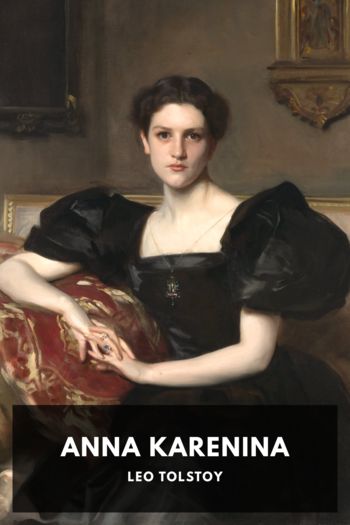What Is Art? Leo Tolstoy (good books to read for 12 year olds TXT) 📖

- Author: Leo Tolstoy
Book online «What Is Art? Leo Tolstoy (good books to read for 12 year olds TXT) 📖». Author Leo Tolstoy
The dilemma is inevitable, and therefore clever and immoral people avoid it by denying one side of it, viz. denying that the common people have a right to art. These people simply and boldly speak out (what lies at the heart of the matter), and say that the participators in and utilisers of what in their esteem is highly beautiful art, i.e. art furnishing the greatest enjoyment, can only be “schöne Geister,” “the elect,” as the romanticists called them, the “Übermenschen,” as they are called by the followers of Nietzsche; the remaining vulgar herd, incapable of experiencing these pleasures, must serve the exalted pleasures of this superior breed of people. The people who express these views at least do not pretend and do not try to combine the incombinable, but frankly admit, what is the case, that our art is an art of the upper classes only. So, essentially, art has been, and is, understood by everyone engaged on it in our society.
IXThe unbelief of the upper classes of the European world had this effect, that instead of an artistic activity aiming at transmitting the highest feelings to which humanity has attained—those flowing from religious perception—we have an activity which aims at affording the greatest enjoyment to a certain class of society. And of all the immense domain of art, that part has been fenced off, and is alone called art, which affords enjoyment to the people of this particular circle.
Apart from the moral effects on European society of such a selection from the whole sphere of art of what did not deserve such a valuation, and the acknowledgment of it as important art, this perversion of art has weakened art itself, and well-nigh destroyed it. The first great result was that art was deprived of the infinite, varied, and profound religious subject-matter proper to it. The second result was that having only a small circle of people in view, it lost its beauty of form and became affected and obscure; and the third and chief result was that it ceased to be either natural or even sincere, and became thoroughly artificial and brain-spun.
The first result—the impoverishment of subject-matter—followed because only that is a true work of art which transmits fresh feelings not before experienced by man. As thought-product is only then real thought-product when it transmits new conceptions and thoughts, and does not merely repeat what was known before, so also an art-product is only then a genuine art-product when it brings a new feeling (however insignificant) into the current of human life. This explains why children and youths are so strongly impressed by those works of art which first transmit to them feelings they had not before experienced.
The same powerful impression is made on people by feelings which are quite new, and have never before been expressed by man. And it is the source from which such feelings flow of which the art of the upper classes has deprived itself by estimating feelings, not in conformity with religious perception, but according to the degree of enjoyment they afford. There is nothing older and more hackneyed than enjoyment, and there is nothing fresher than the feelings springing from the religious consciousness of each age. It could not be otherwise: man’s enjoyment has limits established by his nature, but the movement forward of humanity, that which is voiced by religious perception, has no limits. At every forward step taken by humanity—and such steps are taken in consequence of the greater and greater elucidation of religious perception—men experience new and fresh





Comments (0)